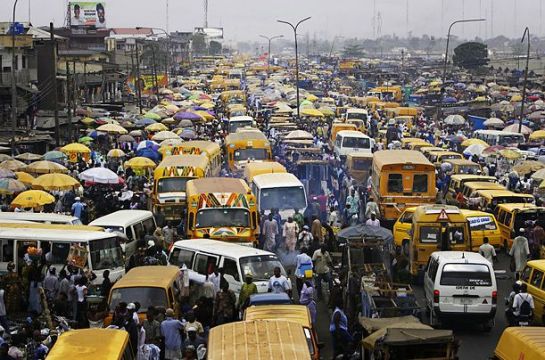LAGOS | Rem Koolhaas [an attempt to understand the nature of rapid urbanisation]
Trying to understand the nature of rapid urbanisation, Rem Koolhaas was involved in this research that started in 2006. Even if our Master Programme is focused on the concept of “relational city”, from time to time, we’re going to share some info and projects completely opposite to this approach, to have some references about what’s happening in the current cities and how urban sprawl is a is a dominant trend nowadays. We can read at the project description:
With an estimated population of 14 million now, Lagos is one of the fastest growing cities on the African continent. By 2020, it is expected to be the third largest city in the world, with 24 million people. After decades of military rule, and in spite of enormous oil revenue, Nigeria suffers from mass poverty, dysfunctional public services and broken down infrastructures. Consequently, Lagos has a reputation for being one of the most dangerous cities in the world and many Africans prefer to avoid it. Architect Rem Koolhaas, however, chose not to. For the past four years, he, and a team of students of The Harvard Project on the City, have come to Lagos regularly to research the type of urbanity that is produced by uncontrolled, explosive population growth. Fascinated by the energy of Lagos, and driven by the desire to understand modernity in all ist aspects, Koolhaas set out to learn from Lagos, rather than planning, building or changing anything.
It is interesting to see the film [below] in which Lagos becomes interesting and worthy of our own consideration only when someone like Koolhaas shows interest in it. In a sense, it takes someone like Koolhaas to make Lagos relevant, a sad reflection on our times, as Bregtje van der Haak pointed.
Throughout the film, Koolhaas emphasises the ‘learning’ aspect of the project he has undertaken in Lagos, stressing its research nature. This is a distinctive stance for an architect to take; usually architects and urban designers approach research as preparation for later intervention, but Koolhaas seems in that respect to want to turn the field of urbanism into pure science. Over the years, he has become very skilful in deploying statistical tools to lend his ‘research’ an empirical air. Inherent in that process however is his assertion that analytical tools are useless. They will not enable us to understand reality or control it. Some of his graphs and charts are completely meaningless, only there to remind us that it is a folly to imagine that we can gain insights into the working of the world.
The documentary Lagos/Koolhaas follows Rem Koolhaas during his research in Lagos over a period of two years. Using small digital cameras, the film maker documented Koolhaas documenting Lagos and tried to grasp and convey a sense of the new urban life that is being invented here. Noisy, unpredictable and exploding in multiple screens and acitvities at once, Lagos/Koolhaast delves into the multi-layered fabric of the city and tries to make sense of it.
Script and direction: Bregtje van der Haak
Photography: Alexander Oey
Sound:Rik Meier
Editor: J.P. Luysterburg
Producer: Sylvia Baan for Pieter van Huystee Film
co-producer: VPRO Television
For more info, please read the text Lagos/Koolhaas or visit the site pvhfilm.


